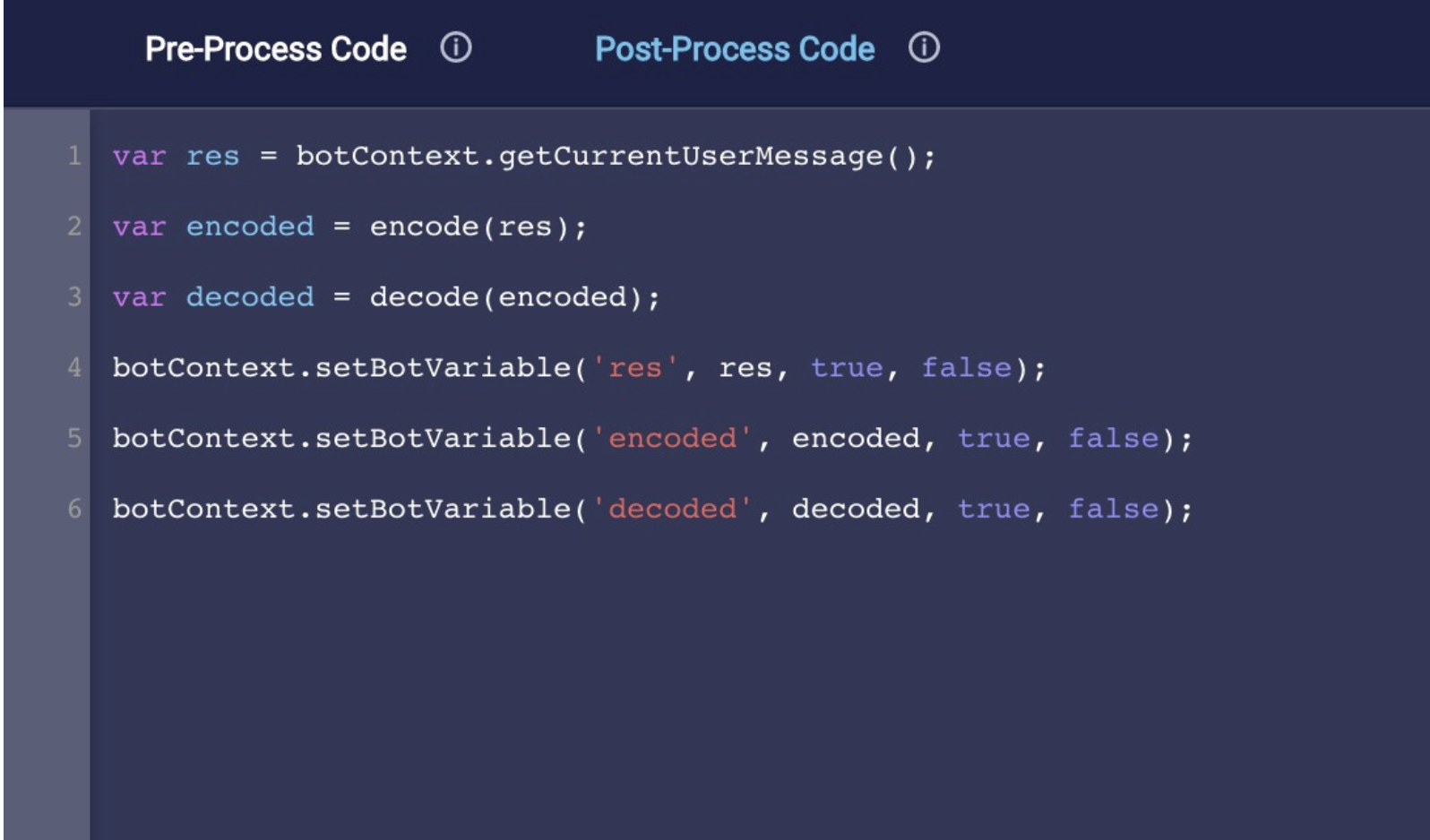This article explores some advanced use cases and techniques that can help you build more sophisticated and powerful Conversation Builder bots.
Step Up authentication
You can use Step Up authentication to authenticate a consumer mid-stream in a conversation and, importantly, retain the messages that were exchanged before the authentication.
Be aware that, if your bot is using Step Up authentication, the bot receives a message after the consumer has been authenticated successfully. The default message is “_STEPUP_”, but you can change it as desired.
Regardless of the message text, it’s important that you catch the Step Up message in the bot’s flow and handle it: Use it to start the authenticated workflow. If you don’t catch the message, a fallback message is sent to the consumer.
Base 64 encoding
The JavaScript editor within LivePerson Conversation Builder doesn't natively support encoding to and decoding from Base 64. If you have a case where you need to do so, you can call a FaaS function and use the crypto package to encode a value and return it to your bot. Alternatively, using the following code in the Global Functions will give you access to this functionality without having to call outside of Conversation Builder.
Below, we've constructed two new functions — encode and decode — that work the same way as the Window object's atob and btoa functions:
function encode(string) {
// base64 character set, plus padding character (=)
var b64 = "ABCDEFGHIJKLMNOPQRSTUVWXYZabcdefghijklmnopqrstuvwxyz0123456789+/=";
// Regular expression to check formal correctness of base64 encoded strings
var b64re = /^(?:[A-Za-z\d+\/]{4})*?(?:[A-Za-z\d+\/]{2}(?:==)?|[A-Za-z\d+\/]{3}=?)?$/;
string = String(string);
var bitmap, a, b, c,
result = "", i = 0,
rest = string.length % 3; // To determine the final padding
for (; i < string.length;) {
if ((a = string.charCodeAt(i++)) > 255 || (b = string.charCodeAt(i++)) > 255 || (c = string.charCodeAt(i++)) > 255)
throw new TypeError("Failed to execute 'btoa' on 'Window': The string to be encoded contains characters outside of the Latin1 range.");
bitmap = (a << 16) | (b << 8) | c;
result += b64.charAt(bitmap >> 18 & 63) + b64.charAt(bitmap >> 12 & 63) + b64.charAt(bitmap >> 6 & 63) + b64.charAt(bitmap & 63);
}
// If there's need of padding, replace the last 'A's with equal signs
return rest ? result.slice(0, rest - 3) + "===".substring(rest) : result;
};
function decode(string) {
var b64 = "ABCDEFGHIJKLMNOPQRSTUVWXYZabcdefghijklmnopqrstuvwxyz0123456789+/=";
// Regular expression to check formal correctness of base64 encoded strings
var b64re = /^(?:[A-Za-z\d+\/]{4})*?(?:[A-Za-z\d+\/]{2}(?:==)?|[A-Za-z\d+\/]{3}=?)?$/;
// atob can work with strings with whitespaces, even inside the encoded part,
// but only \t, \n, \f, \r and ' ', which can be stripped.
string = String(string).replace(/[\t\n\f\r ]+/g, "");
if (!b64re.test(string))
throw new TypeError("Failed to execute 'atob' on 'Window': The string to be decoded is not correctly encoded.");
// Adding the padding if missing, for semplicity
string += "==".slice(2 - (string.length & 3));
var bitmap, result = "", r1, r2, i = 0;
for (; i < string.length;) {
bitmap = b64.indexOf(string.charAt(i++)) << 18 | b64.indexOf(string.charAt(i++)) << 12
| (r1 = b64.indexOf(string.charAt(i++))) << 6 | (r2 = b64.indexOf(string.charAt(i++)));
result += r1 === 64 ? String.fromCharCode(bitmap >> 16 & 255)
: r2 === 64 ? String.fromCharCode(bitmap >> 16 & 255, bitmap >> 8 & 255)
: String.fromCharCode(bitmap >> 16 & 255, bitmap >> 8 & 255, bitmap & 255);
}
return result;
};
Once created, you can call both functions as needed from the Pre-Process and Post-Process code editors.


Both functions were adapted from this polyfill.
